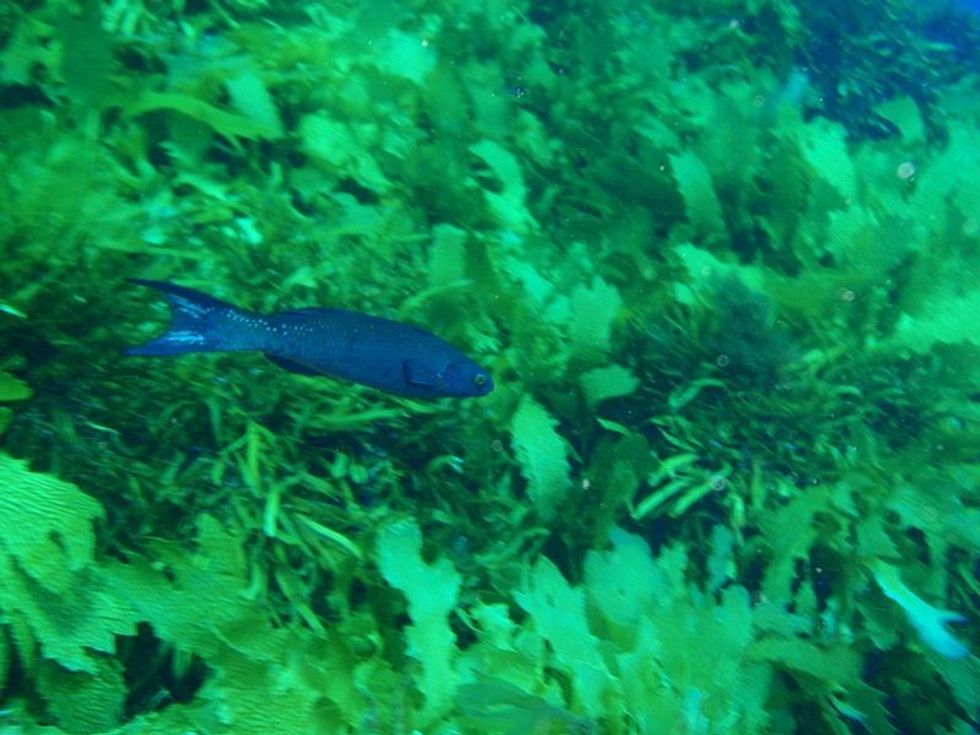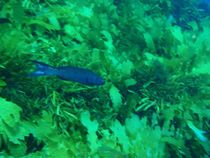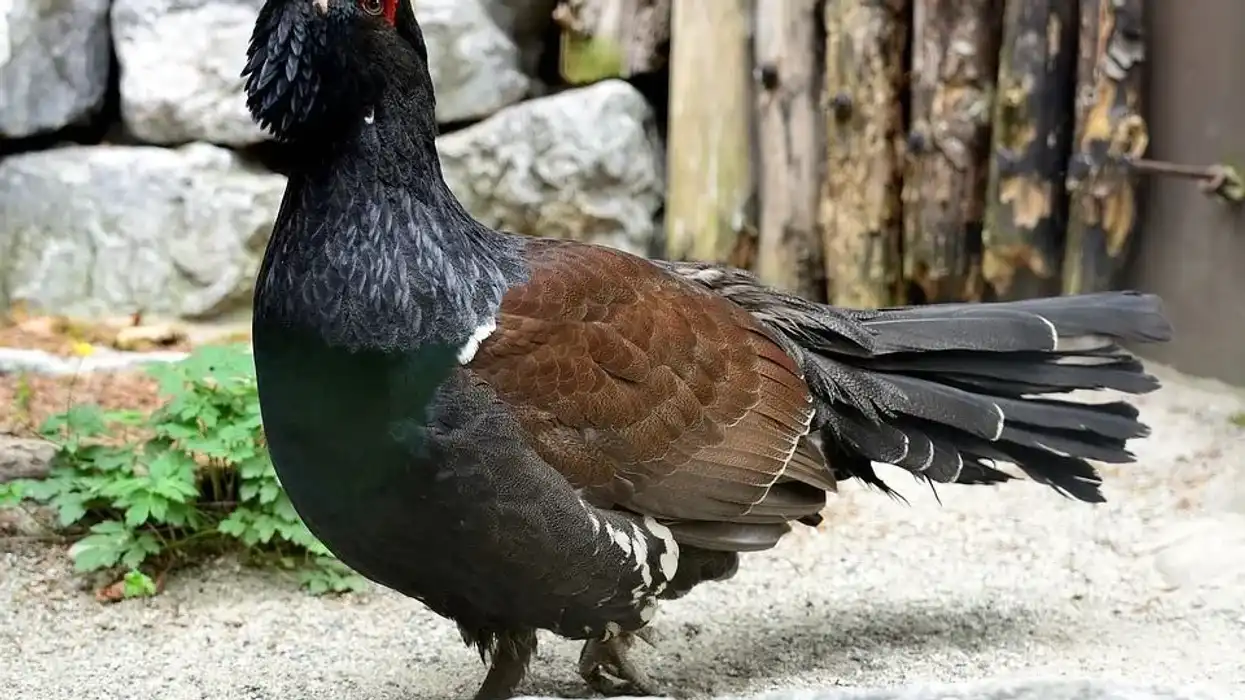Are you fascinated by fish, like the longhorn cowfish? Then here we have all the information on the herring cale fish. The herring cale (Olisthops cyanomelas) is a species of ray-finned fish.
They belong to the Odacidae family, the family of wrasses and parrotfishes. These fish are endemic to some parts of Australia. They are mainly found around the surge zone of rocky areas of the country.
One of the most interesting features of these fish is their appearance. The herring cale appearance changes with the age of the fish.
When they are young or fry, they are usually greenish-brown or gray-colored above and yellow-colored below. This changes with their age and throughout their lifetime, they can be seen adorned with yellow, yellowish-green, black, blue, and silvery-white. They also have strong jaws with serrated edges that take the shape of a parrot-beak, similar to parrotfishes.
Read on to know more about the herring cale. For more relatable content, check out these rainbow trout facts and rockfish facts for kids.
Herring Cale Interesting Facts
What type of animal is a herring cale?
Herring cale (Olisthops cyanomelas) is a species of ray-finned fish.
What class of animal does a herring cale belong to?
The herring cale species belongs to the family Odacidae and class Actinopterygii of animals.
How many herring cale are there in the world?
The population of these Australian fish species in an exact number is not known. They have been seen to be common in some parts of Australia, while in some parts, their density in an area seemed to be quite less. Their population trend is also unknown.
Where does a herring cale live?
These Australian fish are known to be endemic. The herring cale location only consists of parts of Australia. They can be found from the Houtman Abrolhos Islands of the western side of Australia to Angourie Point on the northern side of New South Wales. They can also be found along the coast of Tasmania.
What is a herring cale's habitat?
The primary herring cale habitat is kelp forests to the depth of around 98.4 ft (30 m). They can mainly be found along the surge zone of rocky coastal areas. They may mainly aggregate along brown macroalgae and they may aggregate much less along the seagrass bed of Amphibolis griffithii.
Who does herring cale live with?
Not much is known about the social structure of the herring cale, but they may be found in large schools.
How long does a herring cale live?
Due to a lack of research, the lifespan of these Australian fish is not known. Other species of their order, Labriformes, like the wrasses and the parrotfish are known to love for around five to seven years on an average in the wild. We can assume the same for these fish as well.
How do they reproduce?
Ray-finned fishes have different ways of mating. It has not been observed how the herring cale małe and female engage in reproductive activities.
What is their conservation status?
The conservation status of the herring cale species according to the International Union for Conservation of Nature is listed as Least Concern. Their population is not facing any great threats as of now, so no conservation actions have been planned or being taken at this moment.
However, their habitat range has been seen to overlap with some protected marine areas.
Herring Cale Fun Facts
What does herring cale look like?
The herring cale (Olisthops cyanomelas) is a medium-sized fish species. These fish are identified by their various adaptations like body color which changes as they grow and their beaks that have serrated edges and look like a parrot-beak, similar to a parrotfish.
Juveniles of the herring cale fish have greenish-brown or gray color above and yellow color below.
On the sides of the body of these juveniles, they have an incomplete-looking silvery-white stripe.
In the initial phases, these fish have brown to dark green color above and yellowish-green below with blue lines on their head and blotches and lines on their fins. In the terminal phases, these fish become black, gray, or blue in color with their lower and upper edges or their caudal fin adorned by bright blue lines.

How cute are they?
Not everyone will consider these Australian fish species cute (just like a lungfish or blobfish), but people who find different kinds of fish fascinating, might find the herring cales interesting. These fish have also not been seen to be aggressive in any way.
How do they communicate?
All species of ray-finned fish communicate by sight, sound, and vibration. Some have great hearing abilities and some have great sight. All the fish can feel the vibrations surrounding them from the water by their lateral line. This helps them get an idea of their surroundings, their prey, and predators.
How big is a herring cale?
An adult herring cale is about 20.1 in (51 cm) in length. They are slightly bigger than the bullethead parrotfish. An adult bullethead parrotfish is about 15.8 in (40 cm) in size.
How fast can a herring cale swim?
The exact speed at which the herring cale (Odax cyanomelas) swims is not known. However, they have been seen to swim at a moderate pace. Their dorsal and caudal fins help them swim smoothly in the water. They only swim to the depth of 98.4 ft (30 m) in the water.
How much does a herring cale weigh?
Due to a lack of research, it's not known how much these Australian fish exactly weigh. They are medium in size and are supposed to weigh around 2.2 lb (1 kg).
What are the male and female names of the species?
The herring cale female and male fish have no specific names.
What would you call a baby herring cale?
A herring cale baby is called a fry.
What do they eat?
These Australian fish are herbivorous in nature. They only feed on aquatic plant matters, mostly on different types of algae.
Are they dangerous?
No, the herring cales are not dangerous to humans or otherwise. They have not been seen to be aggressive either.
Would they make a good pet?
No, these Australian fish have not been seen living as pets in any households. They require a certain environment to survive, so it's better to leave them to their wild habitats.
Did you know...
The general size of a herring cale (Odax cyanomelas) suggests that reel and rods would be suitable to catch these fish, but they are not fished by reel and rod. The reason is that they feed entirely on algae, so they cannot be lured by traditional fishing lures.
The preferred herring cale temperature of the surrounding water is about 54.5-73.8°F (12.5-23.2°C).
Is herring cale endangered?
No, these fish are not Endangered. They have been deemed as a species of Least Concern by the International Union for Conservation of Nature. They are not facing any great threats to their population at this moment. They have also been known to occur commonly in some parts within their habitat range.
How did herring cale get their name?
It's not known from where the herring cale got their common name. The scientific name of this species is Olisthops cyanomelas (Richardson, 1850).
The word 'cyanomelas' might have come from the word 'cyan' or blue. These fish can look blue from a distance many times and in addition, they have bright blue lines on their body. They even become blue with black and gray in color in their terminal phases.
This might have been the reason behind their scientific name. It was also frequently placed in Odax genus and named Odax cyanomelas.
Here at Kidadl, we have carefully created lots of interesting family-friendly animal facts for everyone to discover! For more relatable content, check out these pilchard surprising facts and bonito fish fun facts pages.
You can even occupy yourself at home by coloring in one of our free printable rainbow cichlid coloring pages.
Main image and second image by Peter Southwood









